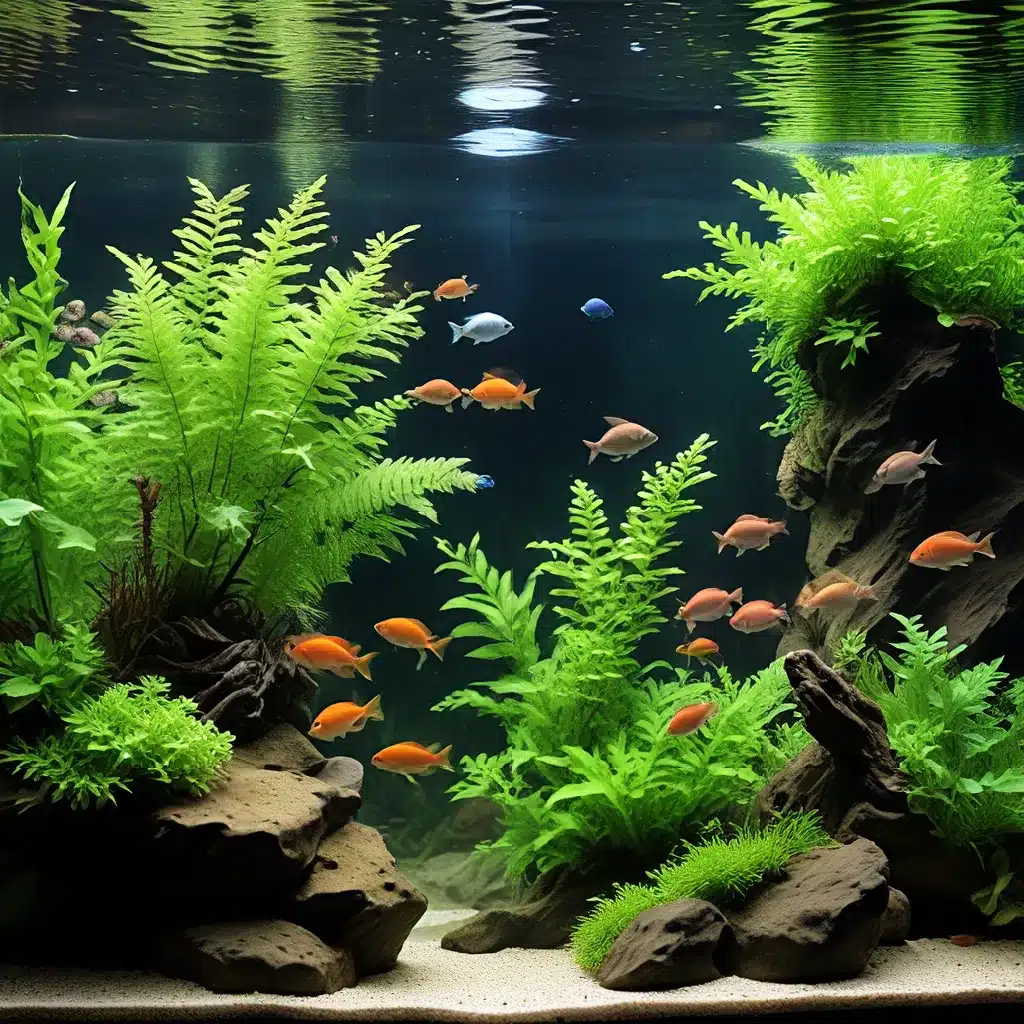
The Importance of Proper Filtration
Maintaining a thriving, balanced aquarium is no small feat, and at the heart of this challenge lies the critical role of effective filtration. As aquarium enthusiasts, we often find ourselves mesmerized by the vibrant colors and captivating behaviors of our underwater companions, but it is the unseen mechanisms that truly keep our aquatic ecosystems in check.
King Aquarium understands that the key to long-term aquarium success lies in mastering the art of filtration. By delving into the nuances of this vital component, we can unlock the secrets to creating a healthy, stable, and efficient aquatic environment that will allow our beloved fish, shrimp, and plants to thrive.
Embracing the Complexity of Filtration
Filtration is not a one-size-fits-all solution in the aquarium hobby. The type, size, and configuration of your filtration system can have a profound impact on the overall health and stability of your aquarium. From mechanical filtration to biological filtration and beyond, each aspect plays a crucial role in maintaining water quality and supporting the delicate balance of your underwater ecosystem.
Mechanical Filtration: This stage of filtration focuses on physically removing particulate matter, such as uneaten food, waste, and detritus, from the water column. By trapping these solid materials, mechanical filtration helps to keep the water clear and prevents the buildup of harmful compounds.
Biological Filtration: The real magic happens with biological filtration, which utilizes beneficial bacteria to break down and convert toxic substances like ammonia and nitrite into less harmful nitrate. These bacteria establish themselves on surfaces within the aquarium, forming a crucial component of the nitrogen cycle.
Chemical Filtration: Complementing the mechanical and biological aspects, chemical filtration involves the use of specialized media to remove dissolved organic compounds, heavy metals, and other impurities from the water. This can include the use of activated carbon, ion exchange resins, and other specialized media.
Understanding the interplay between these different filtration stages is essential for creating a well-rounded and effective system. By strategically combining these approaches, aquarium enthusiasts can ensure that their water remains clean, clear, and conducive to the health and well-being of their aquatic inhabitants.
Botanicals: A Game-Changer in Aquarium Filtration
One of the most exciting and innovative developments in the world of aquarium filtration is the use of botanical materials, such as leaves, pods, and wood. These natural elements not only contribute to the aesthetic appeal of your aquarium but also play a significant role in enhancing the overall biological filtration within your system.
Tannins and Humic Substances: When submerged in water, botanical materials release tannins and humic substances, which can impart a rich, amber-colored hue to the water. These compounds not only create a visually stunning environment but also have the ability to buffer pH, chelate heavy metals, and provide beneficial micronutrients for aquatic life.
Biofilm and Microbial Colonization: The porous surfaces of botanical materials serve as an ideal substrate for the proliferation of beneficial bacteria and the formation of biofilms. These microbial communities play a crucial role in the nitrogen cycle, breaking down organic compounds and converting them into less toxic substances.
Habitat Enrichment: The addition of botanical materials to your aquarium can also provide valuable hiding spots, foraging areas, and spawning grounds for your aquatic inhabitants. By replicating the natural environments from which your fish and shrimp originate, you can create a more diverse and thriving ecosystem.
Balancing Filtration and Botanical Integration
Integrating botanical materials into your aquarium filtration system requires a delicate balance and a deep understanding of the underlying processes at work. It’s important to strike the right equilibrium between mechanical, biological, and chemical filtration to ensure the long-term stability and health of your aquarium.
Monitoring Water Parameters: Regularly testing and monitoring key water parameters, such as pH, ammonia, nitrite, and nitrate, is crucial when incorporating botanical materials. This allows you to make informed adjustments to your filtration setup and ensure that your aquatic inhabitants are thriving in their environment.
Maintenance and Replenishment: Just as the leaves and botanicals in nature undergo a cycle of decomposition and replenishment, aquarium enthusiasts must be diligent in maintaining and replacing these materials over time. This helps to sustain the beneficial bacterial populations and the overall stability of the system.
Customizing Filtration Solutions: There is no one-size-fits-all approach when it comes to aquarium filtration, especially when incorporating botanical elements. Aquarists may need to experiment with different filter types, media configurations, and flow rates to find the optimal balance for their specific setup and aquatic inhabitants.
Embracing the Art of Aquarium Filtration
Mastering the art of aquarium filtration is an ongoing journey, one that requires a dedication to understanding the intricate balance of nature and a willingness to adapt to the unique needs of your aquatic ecosystem. By embracing the complexity of filtration and the transformative power of botanical materials, aquarium enthusiasts can create thriving, visually stunning, and biologically diverse environments that will captivate and inspire for years to come.
At King Aquarium, we believe that the true beauty of an aquarium lies not only in its aesthetic appeal but also in its ecological harmony. By providing our customers with the knowledge, tools, and resources to navigate the world of aquarium filtration, we empower them to unlock the full potential of their underwater oasis and cultivate a lifelong passion for the aquatic hobby.
Remember, the key to a successful aquarium is not just about choosing the right equipment but about understanding the delicate interplay between the various components that make up a healthy, balanced ecosystem. Embrace the art of aquarium filtration, and unlock the secrets to creating a vibrant, thriving underwater world that will captivate and inspire for years to come.

